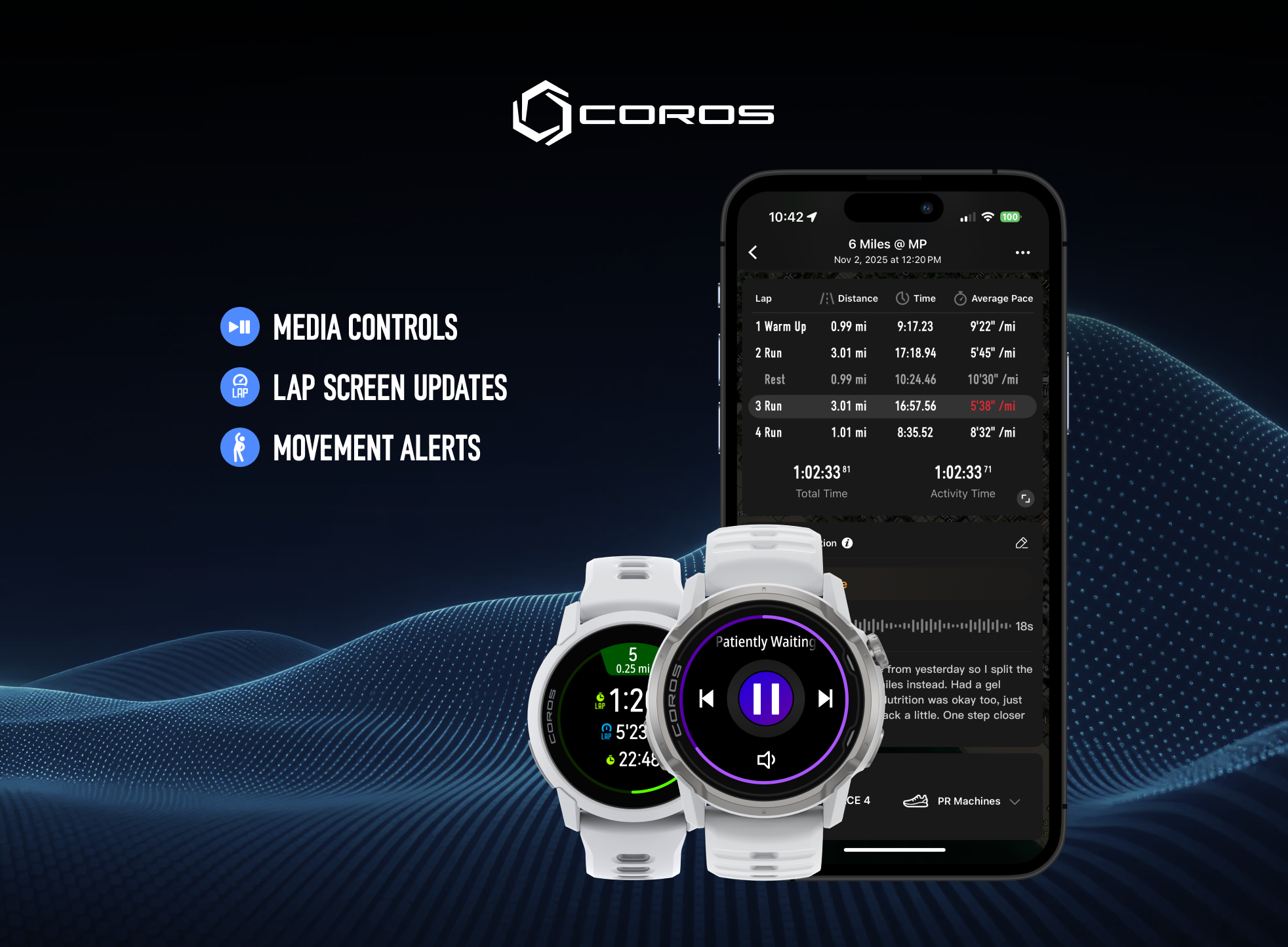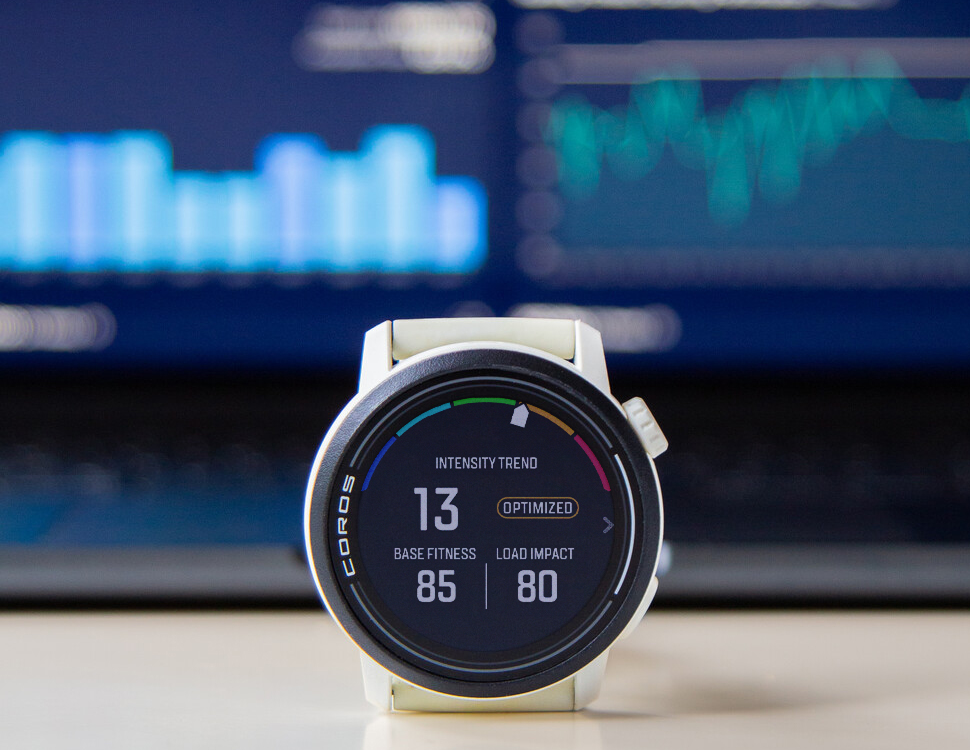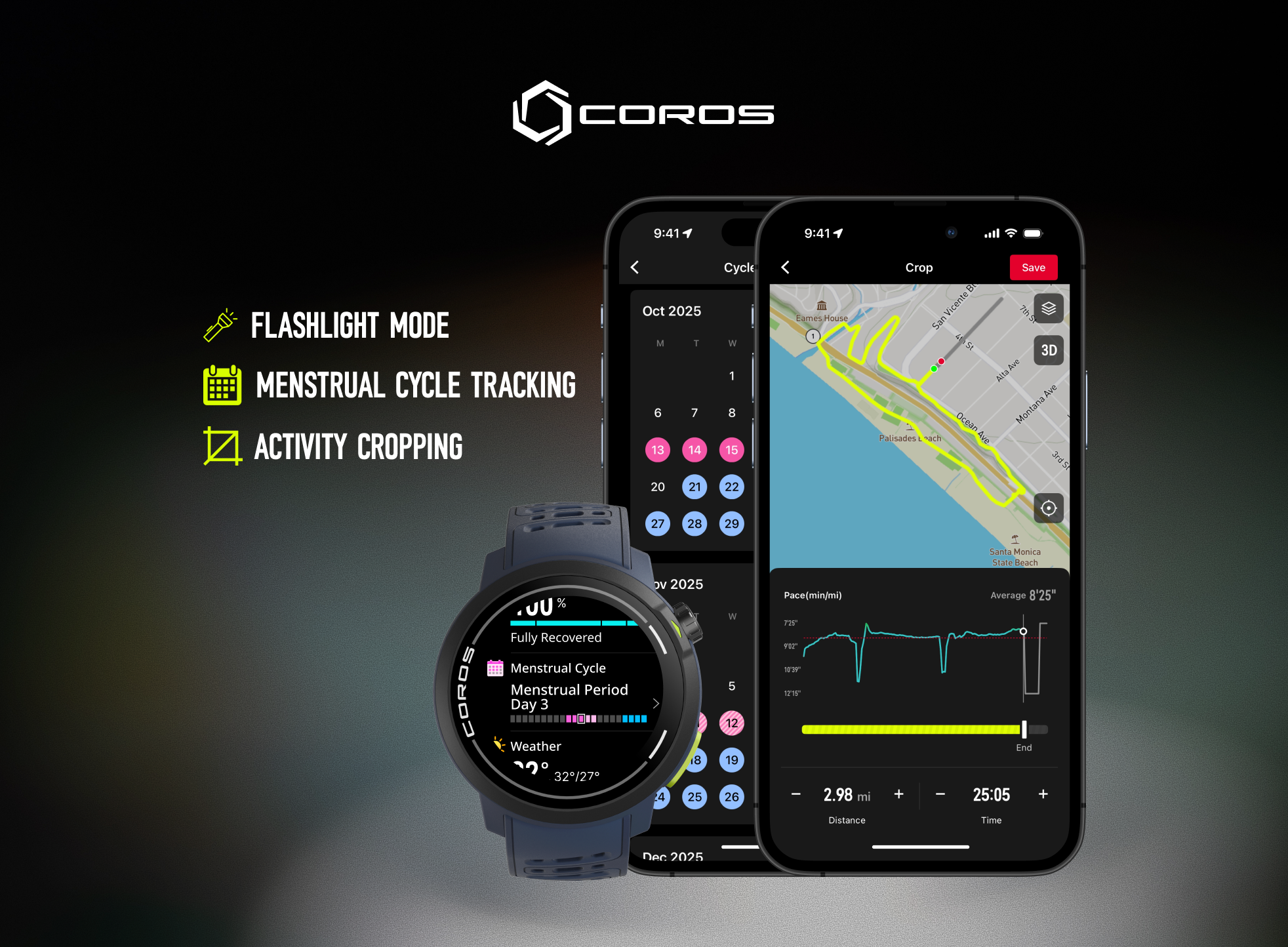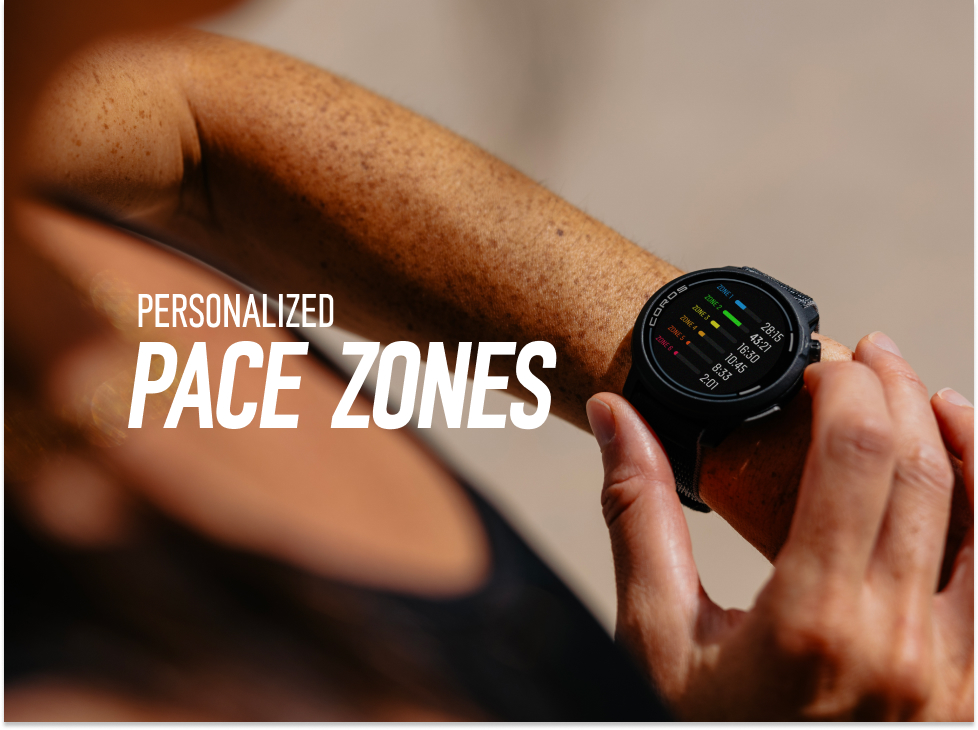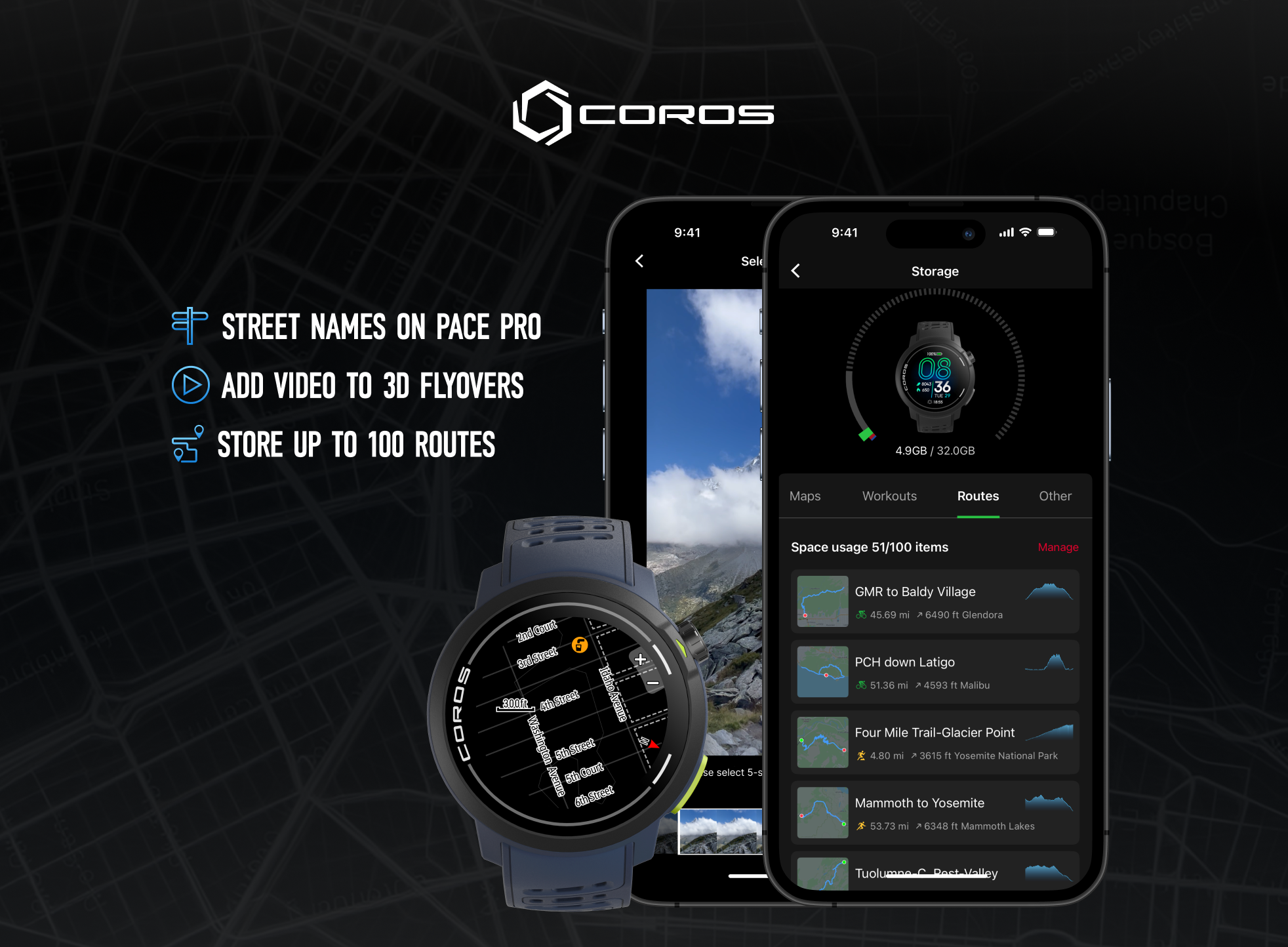HRV has gained in popularity in the training community over the past few years with advanced wearable technology. It is a biomarker used to monitor your stress levels and training readiness via your COROS watch.
Keep reading to learn the ups and downs of HRV monitoring as well as how to best use your COROS watch to monitor HRV and train accordingly.
Introducing HRV
Heart Rate Variability, or HRV, is a measure of the variation in time between each of your heartbeats. This variation is directly influenced by your autonomous nervous system, the same system that controls your heart rate, breathing, digestion, and other tasks your body is completing without you noticing it. Each of those automatic tasks are influenced by the current external and internal situations you are facing on a daily basis. For example, your breathing frequency will naturally increase as you begin physical activity, while your digestive activity will decrease. Those changes are regulated by the two components of your autonomous nervous system: the sympathetic ('fight-or-flight') and parasympathetic ('rest-and-digest') nervous systems.
| Nervous System | Example of real-life scenarios affecting this nervous system | HRV Response |
| Parasympathetic ('rest-and-digest') | - Eating a delicious healthy meal - Watching a TV show you enjoy - Hugging a family member | Within normal range |
| Sympathetic ('fight-or-flight') | - Physical activity - Hearing some bad news - Battling a cold | - Too low (most frequent) - Too high (rare) |
Our brain constantly processes information and then instructs the rest of the body either to stimulate or relax certain functions. A poor night's sleep, a delicious meal, or even exciting news, is all information that influences our nervous system. On the other hand, if your brain perceives too much negative information, your fight-or-flight response may kick in more often and even shift to override.
The variability within your heartbeat, or HRV, has been proven to accurately show which system you may be using more and estimate in which state you may be in. From a sports performance standpoint, HRV allows you to estimate if your nervous system is stable enough to take on a high-intensity session, or perhaps require additional rest.
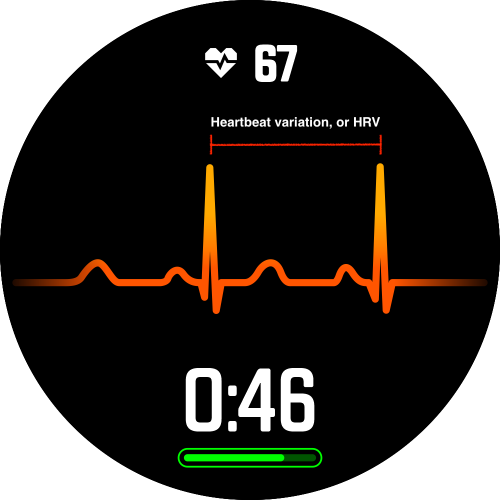
Heartbeat variation as shown in the ECG from the COROS watch.
COROS and HRV
Now, your COROS watch (all COROS watches except APEX 42mm/46mm and PACE 1) measures HRV during your sleep. After a few days of measurement, a 'normal range' will appear within your HRV graph to better interpret results. Similar to other metrics within your COROS App, you can now monitor your HRV only by wearing your watch overnight, without any additional work.
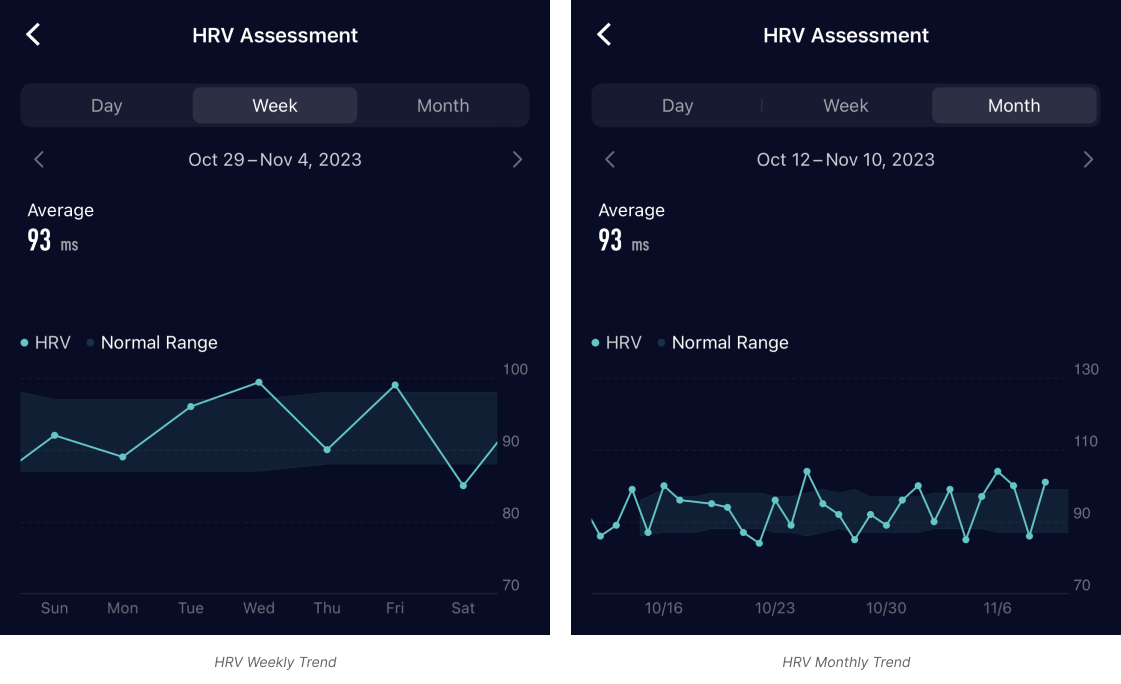
Additionally, it is also possible for you to complete a HRV test manually by using the Wellness Check in your COROS watch toolbox along with other health values.

Wellness Check results directly on your COROS watch.
We recommend making a Wellness Check recording upon waking up while you are still laying on your bed. Walking around for a few minutes, drinking a glass of water, or going to the bathroom, can all disrupt your HRV values.
Manual vs. Automatic HRV
The main problem that will always remain with HRV is how easily it can be affected. Your sleep stages, for example, affect HRV throughout the night. COROS, by providing an average HRV of the night, ensures standardizing data and reducing variability over time. On the other hand, by manually measuring HRV every morning, we ensure consistency in data collection and therefore reduce the chances of additional factors affecting results. Regardless, both methods have been shown to be highly consistent with each other.
| Method to measure HRV | Pros | Cons |
| Automatic during the night | Less work for athletes | Since it collects data for a long time, it can be more easily affected. |
| Manual in the morning | Less variability | Additional work is needed by the athlete. |
Below you will find variables that can affect HRV and to be mindful of during your interpretation of results.
- Stressors timing: If you work out late in the evening or drink alcohol, HRV will be immediately affected and will take time to get back to normal. Therefore, your sleep HRV may be affected while a morning HRV may not be.
- Arrhythmias: Arrhythmias are irregular heartbeats. Therefore, since a single beat out of place can disrupt HRV, your sleep HRV may be affected by those artifacts.
- Parasympathetic saturation: This situation refers to your parasympathetic activity being abnormally high following a high training block by elite athletes. Sleep HRV will be affected by this situation while a morning HRV will add a little more stress and bury this situation.
How to Interpret HRV?
HRV is a metric we see often now in the training community, but how to make sense of those values? It is important to understand that HRV is not a metric you can compare with other athletes. Your normal range may not fall within the same values as your friend, and this is okay. The reason for this individual difference comes from HRV being affected by many factors unique to each individual, especially sex and age as seen in the graph below.
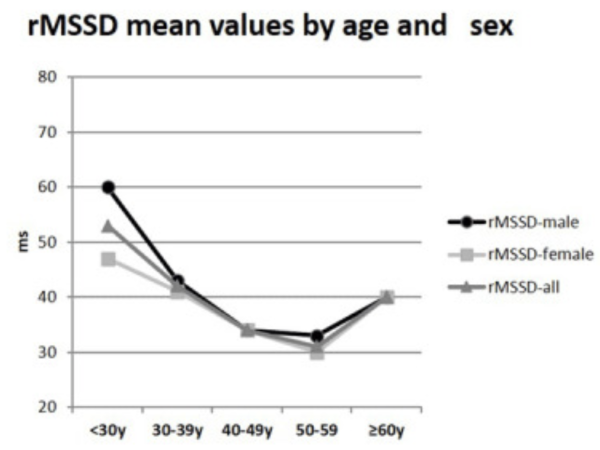
HRV 'normal range' based on sex and age. (PMID: 33150136)
Since we can't compare values, the normal range allows you to quickly grasp when you may be below or above what your own system is used to. Below, you will find two athletes with various HRV graphs and how we can interpret their results.
HRV Examples
The graph on the left shows two lower scores in a row. Although it is impossible to conclude anything from this graph alone, we can estimate that this athlete may have been under accumulated stress at this time. Some additional rest or easier sessions would be recommended. For example, this athlete specifially was battling acute sickness, leading to a decrease in HRV.
The graph on the right shows some drastic changes in HRV over the course of the week, but no particular trend visible. This situation may be explained by some external factors going on in this athlete's life such as travelling or upcoming stressful deadlines for example. Emphasis on sleep may be recommended to ensure their nervous system returns to its usual pattern.

Below you will find a summary table including each HRV score you can get with your COROS watch as well as how you can interpret results for your training.
| HRV Score compared to normal range | What does it mean? | What may cause this score? | How is training affected? |
| Lower | Your nervous system is under more stress than usual. | - Sickness - Poor night of sleep - Anxiety, bad news - Physical activity | Your nervous system may not be ready to take on high-intensity sessions. Easier workouts are recommended. |
| Within normal range | Your nervous system is under its usual amount of daily stress. | - Adequate rest - Healthy lifestyle | Your nervous system is ready to perform high-intensity sessions. |
| Higher | Your nervous system is adjusting to new stimuli, either positive or negative. | - Additional rest - New workout - Traveling | Additional assessment is required to conclude anything in this situation. |
While there are multiple ways to measure HRV, COROS uses the most common method called mRSSD. In this situation, a good rule of thumb is: the higher the values, the better your nervous system is (in most cases). Keep in mind that additional assessment is required to get a full picture.
Want to Learn More?
At COROS, we value the importance of sharing scientific and digestible information to assist you in your training journey. If you are curious about this topic, please feel free to read more about it in the article below:
DISCLAIMER: HRV values obtained with a COROS watch are for reference only and cannot diagnose any medical conditions.

/filters:quality(90)/fit-in/970x750/coros-web-faq/upload/images/d65a76ac78ab5562b0ea734a76ea6291.png)
